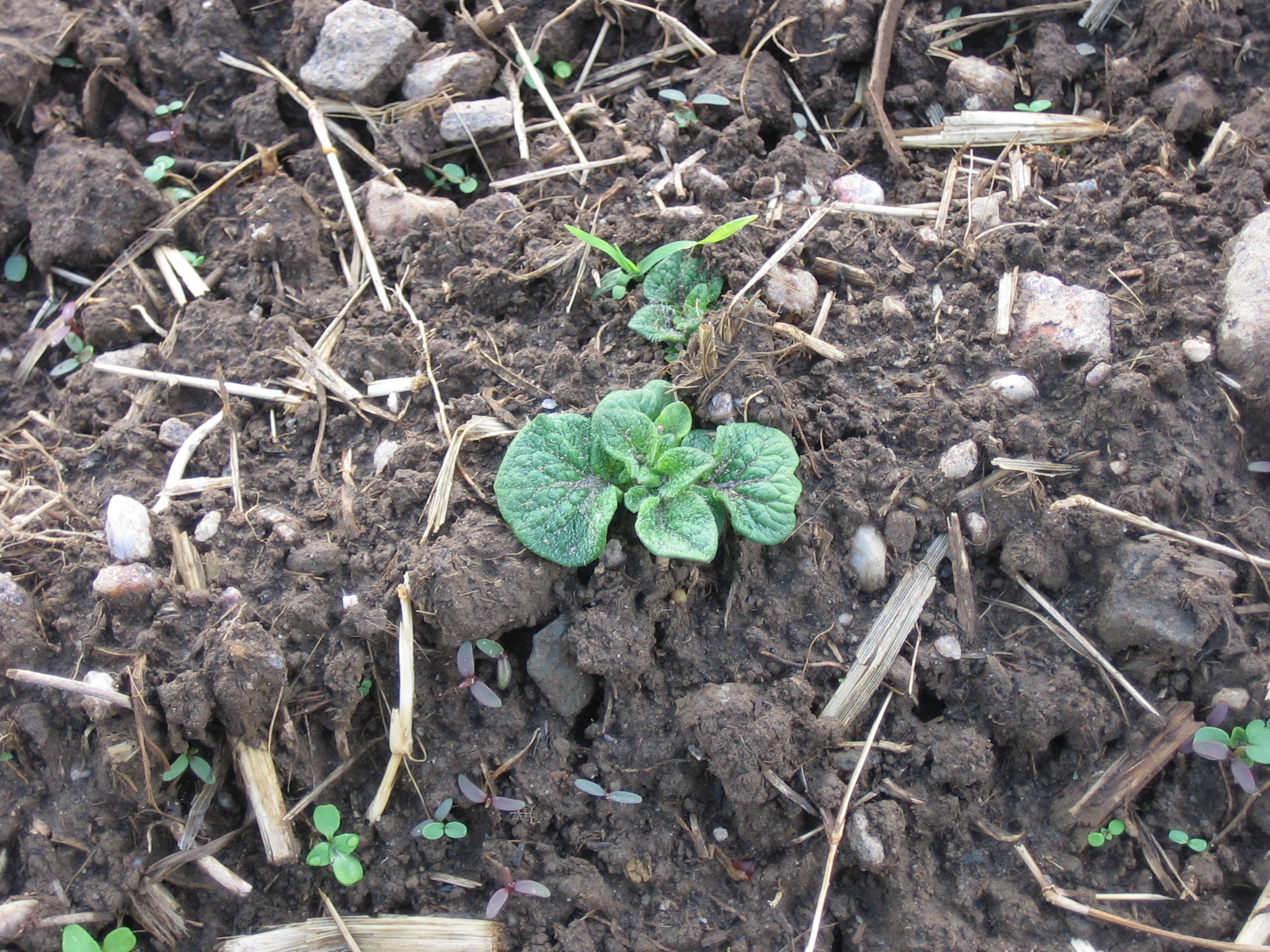
Credit Kathryn Simmons
After my Feed the Soil presentation at Lynchburg College on 3/16, one of the participants emailed me to ask the relative potato yields from our twice a year plantings. The question sent me back to my records. Interestingly (to me) I’d recorded yield almost every time, but never compared the two. Now I know:
15 years of records on spring plantings (mid-March) gave yield ratios from a very low 3:1 to a happy 13:1. The average was 8.2:1 and the median 8:1.
16 years of records on the mid-June planting gave yield ratios ranging from a miserable 3:1 to a high of 10.7:1. The average was 7:1, and the median the same.
We used to plant at 10″ in-row spacing and have shifted to 12″. These figures contain both, with no obvious difference.
Looking at these results points out to me an advantage of doing two plantings that I didn’t mention during my presentation: a poor spring result can be followed by a good summer result. And vice versa. The 13:1 spring result was followed by 4.8:1 in the summer. The 3:1 spring yield was followed by 7.2:1 from the June planting. Doing two plantings spreads the risk.
The questioner also asked if we get potato beetles. We do get them in the spring and spray once, occasionally twice, with Spinosad, which is organically acceptable. In the summer we get no potato beetles. I think the mulch helps. Adult potato beetles emerging from the soil have to walk to find potato plants, and I bet the mulch is very challenging!
We use the same varieties in both plantings, Red Pontiac and Kennebec. Kennebec stores better, Red Pontiac gives higher yields, but isn’t good for long term storage. That said, we recently finished eating Red Pontiacs from our October harvest. I haven’t done much research into trying other varieties because we just buy what’s available locally.The Irish Eyes catalog has descriptions of varieties better for certain conditions. Moose Tubers (Fedco Seeds) has a useful comparative chart of varieties.
Salanova Lettuce Review
My impulse buy when ordering seeds last year was the full set of Salanova Lettuce from Johnny’s. These are varieties of lettuce bred for baby salad mix. You grow them as transplanted heads, and when the head is mature you cut the whole thing and bingo – you get a bowlful of small leaves. They do not grow big leaves, just more and more small leaves. Some of them have a core which you need to cut out in order to make the leaves fall apart. Others you just cut across at the base .If you’ve ever grown Tango, you’ll now the kind of thing. As well as being very pretty, these lettuces are said to save you time at harvesting compared to cutting along a row of baby lettuce mix. This aspect really appealed to some of our crew.

Because the seed is expensive (100 pelleted seeds for $15.95), we decided to grow these for our hoophouse “filler” heads, which we transplant into gaps that happen in our beds of head and leaf lettuce. That way we’d get them at the time of year (late winter/early spring) when we grow baby lettuce mix and we could do a direct comparison.
We bought the full set, 100 seeds of the Foundation Collection (the more frilly types) and 100 seeds of the Premier Collection (the more flat and lobed types). Each collection is 25 seeds each of four varieties. We sowed each type in a 4′ seed row (seeds 2 inches apart) on 10/23. They came up well, and we transplanted them 1/2/14. We just started using them 3/20, so the jury is still out. Some unfortunately got cut before reaching full size. I’m not sure what full size is yet. Next year, I’d sow them earlier, so that the heads mature sooner. This winter has been very cold, they may have grown slower than they could have – some other seedlings are certainly slowed down.
A couple of them are exceptionally pretty. The Red Butter type has beautiful very dark red simple shaped leaves. The Red Sweet Crisp reminds me of a fine seaweed in looks – green at the base and intense dark red at the tips. The Green Sweet Crisp is surprisingly sweet, in a good way. Winter lettuce mixes are not usually crisp or sweet.

Also next year, I’d like to compare these with some “Multileaf” varieties from Osborne Seeds. They have 7 varieties, 3 green and 4 red. It took me a little while to realize “multired” was “multi-red” and not the past tense of “to multire”, a verb I was pondering the meaning of! They are $7 – $7.47 for 500 pelleted seeds. Some are back-ordered right now, but I’d want them next winter anyway. I’d also like to do a side-by-side comparison with Tango, Oscarde and Panisse which are inclined towards packing in many small leaves without further marketing.
And finally, yes, we’re expecting some more possible snow tomorrow morning. Can you believe it? Maybe we’ll just get rain.


















